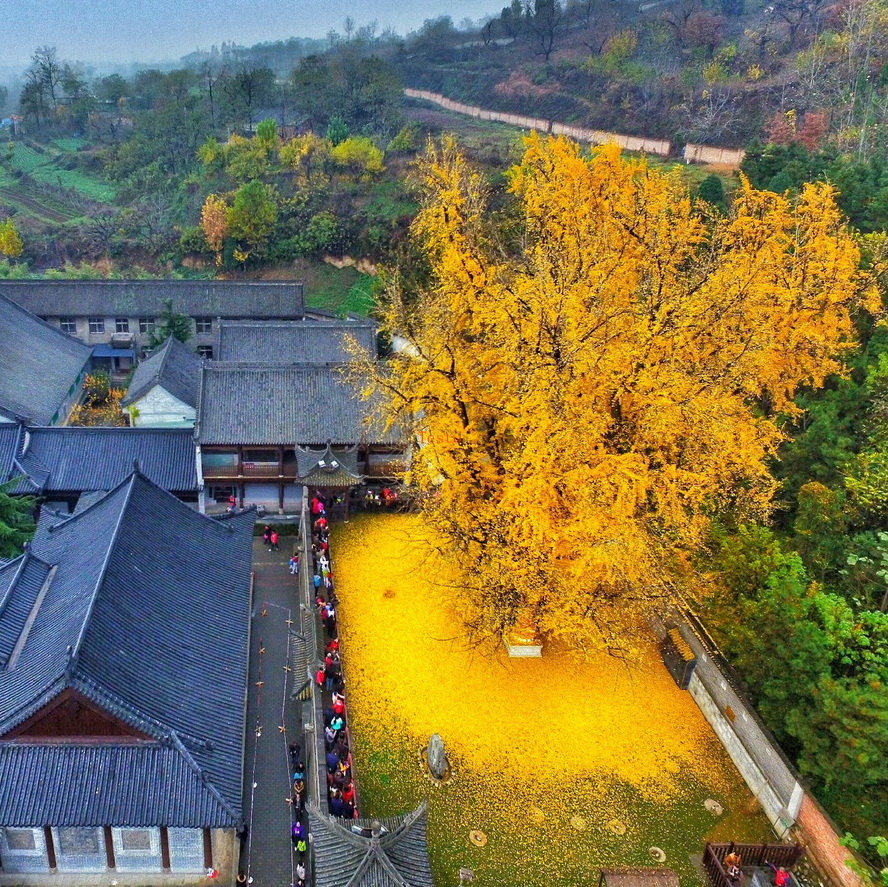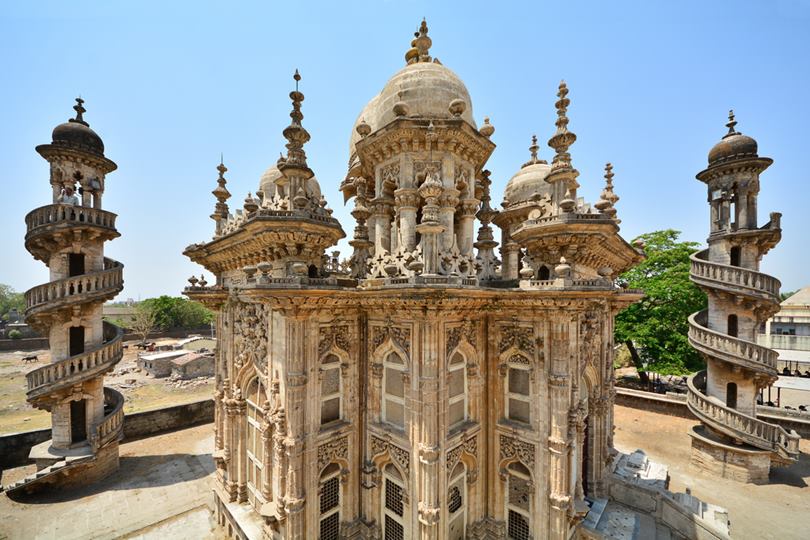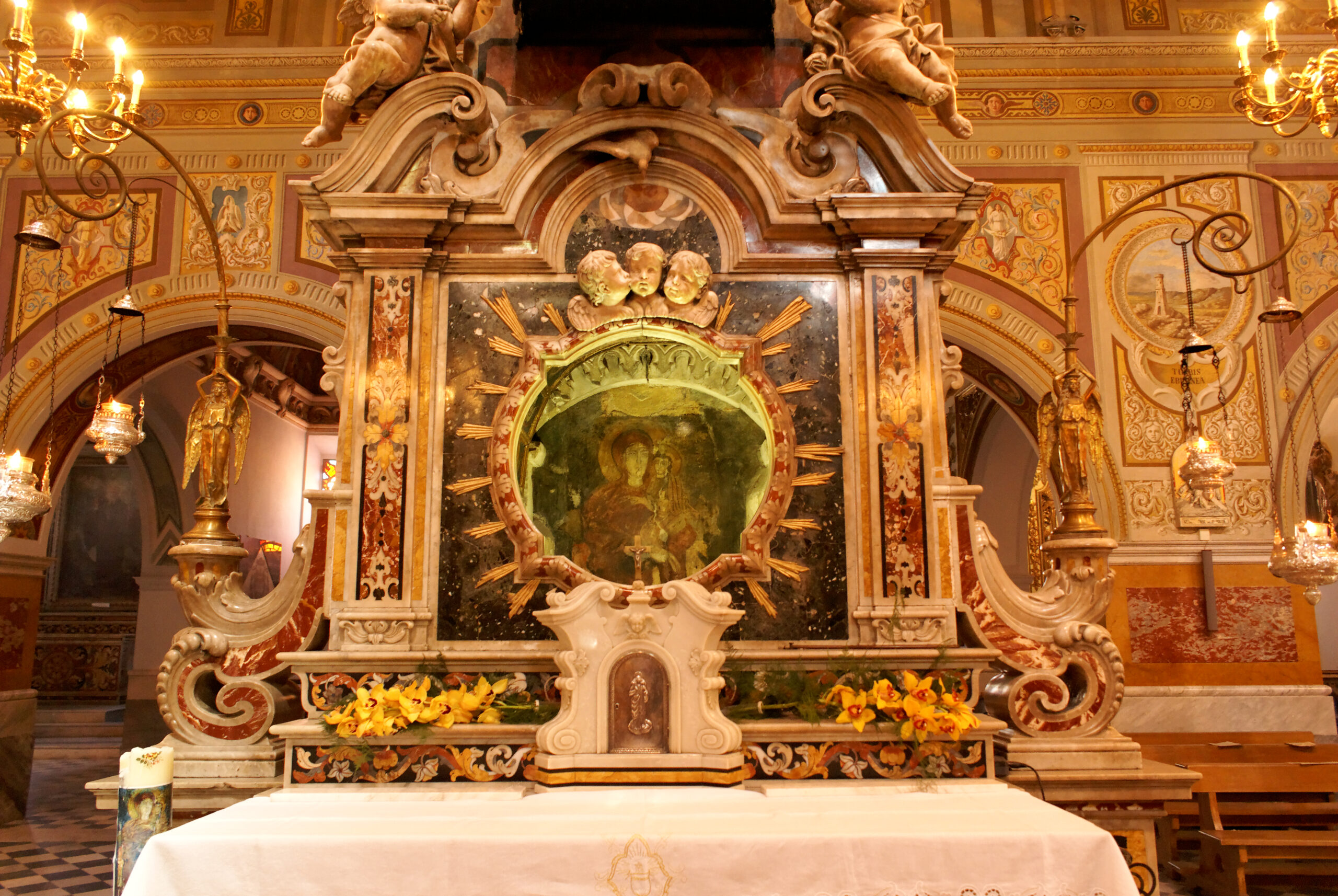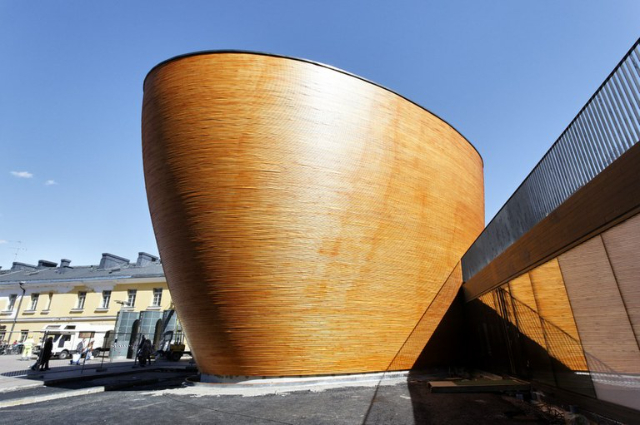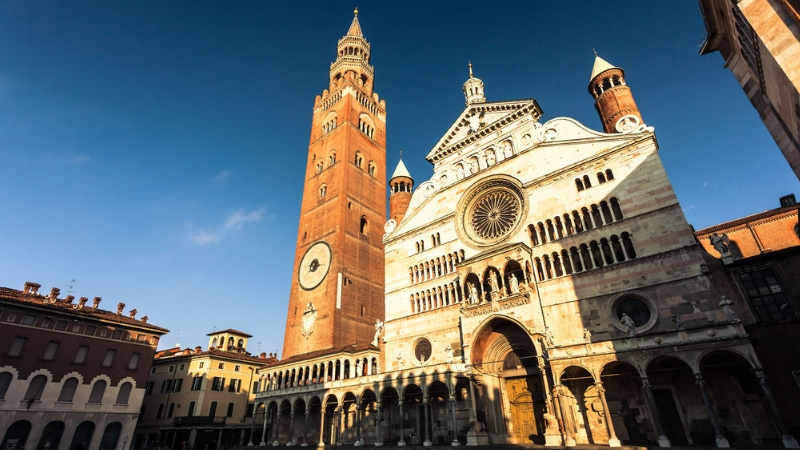There is a natural phenomenon in China that has no equal. At the foot of the Zhongnan Mountains, there is a Buddhist temple that monks take great care of. It is a place of worship surrounded by greenery, far from the grey buildings of the city. Since ancient times, the Buddhist temple of Gu Guanyin has been considered a reference point for spirituality thanks to a tree that has made this place famous all over the world.The temple is already very fascinating in itself, but in autumn it becomes a pilgrimage destination for thousands of people who want to see with their own eyes the tree that is located in one of the lawns of the monastery. It is a Ginkgo Biloba, an ancient species defined as a "living fossil" because it originated 250 million years ago. When dinosaurs existed and man was not yet present on earth, there were already Ginkgo Biloba trees.
The tree we are talking about is about 1,400 years old and is considered magical. When it starts to lose its golden leaves in the early cold it creates an amazing effect: the lawn of the Buddhist temple is tinged with an intense yellow color that dominates the green and stands out on the landscape of the place, almost as if the tree was actually a golden statue.
It is said that the tree was planted, 1400 years ago, by Emperor Li Shimin, one of the most important Chinese rulers, founder of the Tang dynasty (618-907 AD). Perhaps also because of its presumed noble origins, the specimen is popular throughout China, but the colour of its leaves is by no means an isolated case.
